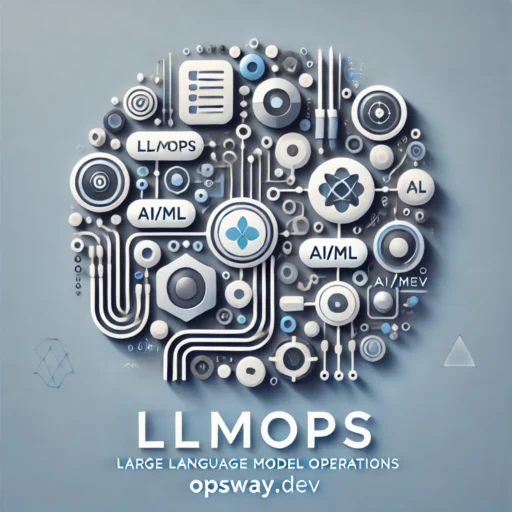Large Language Model Operations (LLMOps) is an emerging field that addresses the complex requirements of deploying and managing large language models (LLMs) in production environments. As these models become integral to various applications, from chatbots to content generation, LLMOps provides a structured approach to ensure their efficient and effective operation. This blog post explores the key aspects of LLMOps, including its necessity, benefits, components, and best practices.
What is LLMOps?
LLMOps encompasses the practices, techniques, and tools used for the operational management of LLMs. It builds on the principles of MLOps (Machine Learning Operations) but is specifically tailored to address the unique challenges posed by LLMs, such as their large size, the complexity of their deployment, and the need for continuous monitoring and fine-tuning.
Why Do We Need LLMOps?
Deploying LLMs within commercial products presents several challenges that go beyond prototyping. The LLM development lifecycle includes various complex components such as data ingestion, data preparation, prompt engineering, model fine-tuning, deployment, and monitoring. These tasks require collaboration across multiple teams, from data engineering to machine learning engineering, making stringent operational rigor essential. LLMOps ensures these processes are synchronized and functioning effectively, enabling the continuous improvement of LLMs in production environments.
Benefits of LLMOps
- Efficiency: LLMOps streamlines model and pipeline development, allowing teams to deliver higher-quality models faster and deploy them into production more efficiently.
- Scalability: It supports the management and monitoring of thousands of models, enabling continuous integration, delivery, and deployment.
- Risk Reduction: LLMOps enhances transparency and compliance with regulatory requirements, mitigating risks associated with the deployment of LLMs.
Components of LLMOps
LLMOps spans various stages of the machine learning lifecycle, each with specific components and best practices:
- Exploratory Data Analysis (EDA): This involves creating reproducible, shareable datasets and visualizations to iteratively explore and prepare data for the machine learning lifecycle.
- Data Preparation and Prompt Engineering: Transforming, aggregating, and de-duplicating data while developing reliable prompts for LLMs.
- Model Fine-Tuning: Using libraries like Hugging Face Transformers, PyTorch, and TensorFlow to fine-tune models for improved performance.
- Model Review and Governance: Tracking model lineage and versions, and managing artifacts throughout their lifecycle.
- Model Inference and Serving: Managing model refresh rates and inference request times, and deploying models with tools like REST APIs.
- Model Monitoring with Human Feedback: Creating pipelines for monitoring model performance and detecting issues like model drift or malicious user behavior.
Best Practices for LLMOps
- Iterative EDA: Continuously explore and refine datasets to ensure high-quality data is used for model training.
- Collaborative Data Preparation: Ensure data transformations and prompt engineering processes are transparent and shared across teams.
- Comprehensive Fine-Tuning: Regularly fine-tune models using domain-specific data to maintain and improve their performance.
- Robust Governance: Implement strict version control and artifact management to maintain model integrity and compliance.
- Efficient Deployment: Use CI/CD pipelines to automate model deployment and ensure quick iteration cycles.
- Continuous Monitoring: Set up alert systems to monitor model performance and handle user feedback to refine models continually.
LLMOps Platforms and Tools
A robust LLMOps platform provides a collaborative environment for data scientists and engineers, facilitating the iterative exploration of data, real-time experiment tracking, and efficient model and pipeline management. Key features of an LLMOps platform include:
- Model Management: Tools like MLflow enable tracking of model parameters, versioning, and deployment management.
- Prompt Engineering: Advanced UIs for developing and testing prompts to ensure reliable LLM responses.
- Monitoring and Diagnostics: Integrated systems for capturing model performance data and debugging issues in real-time.
Case Study: Databricks and MLflow
Databricks offers a comprehensive suite of LLMOps tools through its MLflow platform, which includes capabilities for prompt engineering, model evaluation, and deployment. MLflow’s prompt engineering UI, for example, allows users to log and track evaluation runs, compare model performances, and manage model endpoints efficiently. The integration of Databricks Model Serving further enhances LLMOps by optimizing the serving of large language models, reducing latency, and ensuring scalability.
Conclusion
LLMOps is a critical discipline for organizations looking to leverage the full potential of large language models. By adopting LLMOps practices, teams can achieve greater efficiency, scalability, and risk reduction in deploying and managing LLMs. As the field evolves, platforms like Databricks and tools like MLflow will continue to play a pivotal role in shaping best practices and providing the necessary infrastructure for successful LLM operations.
For further details, you can explore the comprehensive resources available from Databricks, Google Cloud, Red Hat, and other industry leaders in the LLMOps space.





